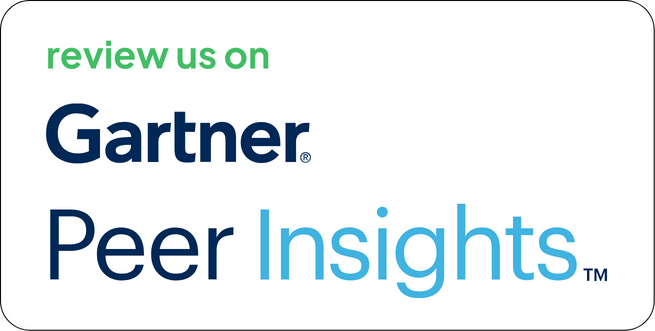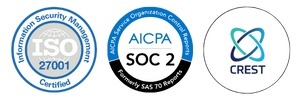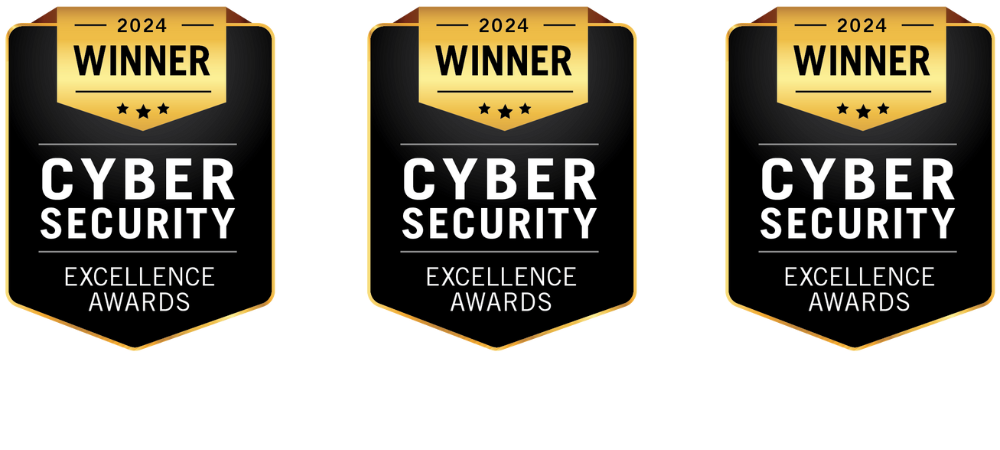The ROI of Vulnerability Management comes down to the metrics—these might sound boring, but they are the magic numbers that decide whether security spending should be considered a cost or a value investment.
“In our last board meeting, I talked about exploit trends and threat intel for 20 minutes straight. Everything was covered from zero days to patch gaps to CVSS. I felt I had given a thorough presentation until the board said – SO WHAT?”

These were the exact words of one of our clients, a CISO in an enterprise. He shared this story with us when he was taking the demo of the Strobes platform.
He further said, “I realized that speaking in this technical language won’t work with the board; all they understand is the business language.”
And this is the exact issue. Security leaders or CISOs mostly talk about CVEs, scanner outputs, and patch status. But what the board really needs to hear is
- Quantified risk across business units to understand what’s most at risk
- MTTR (Mean Time to Respond) trends mapped as per critical sensitivity
- The potential financial impact of vulnerabilities so they can know how it is affecting the company’s reputation and cost
All these factors are available when you have the right vulnerability management metrics – clear, accurate, and board-ready.
Why Security Conversations Fail in Boardrooms?
The security team and the board are usually not on the same page, one of the most common issues before every meeting.
 The security team talks about something like this –
The security team talks about something like this –
- We patched 10000+ vulnerabilities this quarter
- Detected Zero days of CVSS score 9.8
- Threat actors used Log4Shell which we fixed proactively
Whereas board members think like – “All these are okay, but what about business? Is it safe or not?”
The major issue lies in the vulnerability management metrics. Board members do not have time to think about CVE or CVSS. Their focus is on risk, impact, and accountability.
They basically look for these three things –
1. Are we safer than before?
- Are the same old issues coming again and again or is there any actual progress?
2. Is our money being spent on the right thing?
- Tools and vendors are only filing the dashboard, or is there any real reduction in the risks?
3. Where do we stand against our competitors in the market?
- Are we really at the market level, or still playing a catch-up game?
And when the board doesn’t get all these answers clearly, it shakes their trust. They get a perception of security as a cost center, where they are only spending money and not getting any value in the business growth.
This is where vulnerability management metrics play a key role. If you are able to show them some metrics like –
- Percentage of risk reduction every quarter
- Top 10 business critical vulnerabilities fixed
- MTTR coming down from 20 days to 7 days
- 98% patch SLA adherence met
The board will see the security team as a controller, a team who knows their work and their spending is giving them ROI. In short, they need real numbers, not narratives. And those numbers will come only when you have proper tracking with clean, contextual vulnerability management metrics.
What Does the ROI of Vulnerability Management Look Like?
The company management wants to actually see nothing but the impact. And the value of security is understandable when you break it down into three pillars –
- Risk Reduction
- Operational Efficiency
- Compliance & Audit Readiness
Let’s break it down with real examples.
1. Risk Reduction
What is the primary goal of the security team? To make the business secure, right? But saying we have fixed 10,000 vulnerabilities to the board is not enough. They ask “How many of them were critical” and “How many of them are now left?” When one of our enterprise-level e-commerce clients used the Strobes platform, they noticed a few changes –
- Their critical vulnerability backlog becomes zero: Earlier high-risk vulnerabilities used to remain unpatched for months, but after using the Strobes, top-priority issues started getting patched in days.
- The exposure window also reduced from 15 days to just 5 days: Earlier, patching vulnerabilities took at least 2 weeks, and during that time the assets remained open to attack. After using the Strobes platform, they patched the issues within 5 days before getting exploited.
It’s a journey from “we’re working on it” to “already resolved.” This is all because of the right vulnerability management metrics that they got from the platform.
Check out – How Strobes CTEM Reduced Vulnerability Remediation Time by 67% and False Positives by 82%
2. Operational Efficiency
The second pillar is efficiency. It means if your team is only working or working smartly. This becomes even more important when you have huge data such as 50,000+ vulnerabilities and a small team to manage all of these.
After adopting the Strobes platform, a CISO shared – “Previously, our team used to take 3 to 4 days to manually triage the findings. Now, the same work gets done in just a day with the help of AI deduplication and risk-based filters of the Strobes platform.“
Here are the actual numbers:
- Reduced 82% of manual triage workload: It means, the work becomes much easier and the focus gets shifted to high-priority tasks.
- Duplicate tickets down by 70%: Earlier, one vulnerability used to come from 3 to 4 different scanners. Now all gets auto-merged, leaving no confusion and duplication.
For board members, it means –
- Fewer people, more output
- Time-saving = Cost saving
- Efficient working of the team without getting burned out
And most importantly, your program is all ready to scale up.
3. Compliance & Audit Readiness
Whether you follow PCI-DSS, HIPAA, or any other internal framework, compliance is a non-negotiable for the board. Having good security doesn’t mean reducing risk only, you need proof as well. And that proof is only visible when your compliance game is solid. One of the thoughts that company management has in their mind –
“What happens if an auditor is standing at the door, how ready are we?”
Truly, traditional compliance processes are slow and tedious –
- You have to check patched SLAs manually
- Create a report on a spreadsheet manually
- The team goes into panic mode before the auditor arrives – emails, follow-ups, last-minute data pulls, and whatnot
But when you have a centralized platform like Strobes, all these works get easily done with the help of a real-time dashboard and automated reports.
Take the example of our e-commerce client –
“Auditor asked – ‘show me your Q3 patch status for critical vulnerabilities’, we just opened the dashboard, used a compliance filter, and exported the report, that’s it.”
So, this is not just efficiency, but audit-ready maturity.
When the board can clearly see that –
- 98% SLA adherence is being tracked consistently
- ISO, PCI-DSS, NIST, etc cybersecurity frameworks reports are available with a click
- All assets are mapped to policies
Their confidence level and trust in the security team spike, and they remain stress-free and think – “compliance is not an issue, we’re in control.”
The other benefit is that it saves bandwidth. The work that used to take 3 days of manual work earlier, now gets done in 3 minutes of dashboard export. At the end of the day, it’s important to understand that compliance is not just a checkbox, it’s a signal of trust for the board, auditors, and clients.
Translate Vulnerability Management Metrics Into Money
This point could be the game changer for security leaders or CISOs. You need to understand that the board doesn’t want to know about security, they want to know about return. They don’t ask –
- How many CVEs are fixed?
- Which tool has been deployed?
- Which scanner offered the best result?
They directly ask – “How much have we spent on this, and what have we got?”
Until you don’t convert vulnerability management metrics into dollars or downtime hours, they will never be fully convinced. Let’s understand this with a real example –
1. Time Saved = Money Saved
Suppose a security engineer of your team spent 600 hours every quarter in vulnerability triage and prioritization. It means after every scan, the engineer is manually checking
- Is vulnerability critical or not
- Which asset is affected
- Business critical risk of the vulnerability
- And from where the fix should be implemented
This whole process is repetitive, time-consuming, and highly prone to human error. Now, if an AI-driven platform like Strobes is used, then it automatically
- Removes duplicate findings
- Assign risk score based on context
- Prioritize high-risk issues
Hence, with automated workflow, you can do the same work with better accuracy in 20% effort. Meaning –
- Saving 480 hours of work per quarter
- Even if we consider the average loaded cost $50/ hour
- Still, there could be a saving of $24,000 per quarter on a single resource
And if 5 to 6 people are involved in the same process, it is a crystal clear picture for the board that the license fee of the platform is recovered in just one quarter. This is proof of smart resourcing and not just time saving, the exact kind of ROI that the board wants to see.
2. Risk Avoided = Incident Cost Prevented
As per the IBM report, an average data breach costs $4.88 million. But this cost is not about data loss only, it includes downtime, legal penalties, and customer churn. Now think, if you are using a centralised platform like Strobes, where
- Real-time exploit trends are monitored
- Business critical assets are prioritized
- Patching being prioritized not on technical severity but on business impact
And because of this process, you prevent a major breach? In short, you avoided a direct business risk of $4.88 million. That’s not just a great job security team. That’s a board-level value, measurable and strategic.
3. Compliance Readiness = Fine Avoidance
Now let’s discuss a little bit about compliance because this is a non-negotiable zone for the board. If your business falls under healthcare, finance, SaaS, e-commerce, or federal contracts, then you must be aware of HIPAA, SOX, PCI-DSS, and NIST-like regulations. These frameworks mean zero tolerance for security lapses. And these are not normal security compliance. Every vulnerability must have documented patch proof, audit logs, and SLA tracking.
Slipping of these compliance means –
- Heavy fines
- Legal notice
- Loss of customer trust
- Slow or shutting down of revenue stream
For instance,
- $50,000 fine per violation under HIPAA in case of a patient data leak
- SOX noncompliance? Heavy corporate penalty plus board accountability
- If missed PCI DSS, then get ready for payment processors’s penalty and reputational damage
- Non-compliance with NIST leads to revocation of gov/federal contracts
In short, compliance failure = financial loss + reputational damage.
The board is always hyper-alert for compliance, and they expect their security team to be ready whenever a compliance audit happens.
Now, as a security leader, you can get relief when you have a platform like Strobes. Here’s how it helps in making compliance a breeze –
- Tracks 98% SLA adherence in real time
- Pre-built exportable compliance report for HIPAA, SOX, PCI-DSS, etc., with filters
- Generates audit trail of each action and remediation step automatically
- On-time SLA alert, so you don’t miss any deadlines
So when an auditor comes and asks – “Show me patching evidence for all vulnerabilities of Q3”, you don’t panic.
Just open the dashboard, use the filter, and export the report, that’s it. For board, it is simple and clear –
- Compliance is not a risk but a controlled system
- No chance of audit failure
- The security team is not reacting but proactively managing work
When the board gets this clarity, their perception changes from “compliance burden” to “compliance edge.” Today, compliance is not just about avoiding penalties but building trust and protecting brand reputation.
Thus, only saying “Security has improved” is not enough, you have to show to the board
- How much money is saved?
- How many risks are avoided ?
- How many hours are saved?
All these are only possible when you have data-backed vulnerability management metrics, that you can easily convert into the language of money.
7 Vulnerability Management Metrics that Win Board Approval

Here are the MVPs, you should not miss-
1. MTTR (Mean Time to Remediate)
How fast you fix the detected vulnerability. Fast fix = better control
2. % of Critical Vulns Fixed
How many, and which ones? Critical ones matter.
3. False Positive Rate
What’s the reduction in scanner noise? High accuracy = Smart team effort.
4. Time Saved by Automation
The number of hours saved. Time saved = money saved
5. SLA Adherence
Patch deadlines met? Strong compliance = No fines.
6. Security Debt Trendline
Vulnerability backlog is up or down? Downward graph = Good health
7. Risk Score by Business Vertical
Risks in different departments like Finance, HR, and Ops. It helps the board connect risk with revenue.
You Can’t Measure What You Can’t Manage
You know the security program is going well. Breaches are avoided, patching is fast, and the team is involved. Yet, if the board cannot see the data, and cannot feel it, then there is no impact of all these on them. This is the game you have to change.
Instead of giving technical knowledge to the board, provide such vulnerability management metrics numbers that speak their language, such as
- The operational cost saved due to automation
- Decline in overall business risk
- Compliance SLAs are meeting consistently
- Improved average time of fixing critical issues
This is the language that the board wants you to communicate with, clear and backed by ROI data.
Bonus: 3 Quick Wins that You Can Show to the Board
1. Create a concise report on “Top Risks Resolved”
Show them how you closed the biggest security concerns
2. Before and after MTTR metrics
Show how many days it takes to remediate the issues. For example, earlier it took 15 days but now only 5 days.
3. Tie up a patch with business loss
If delayed, it could have cost us $250k/hour or something in downtime.
Don’t Wait! Convert Metrics Into Business Impact Now
The waiting game does not work anymore. It’s time to take a step ahead by converting metrics into board-level business impact. Book a quick 20-minute strategy session and experience how Strobes can help you turn this into reality.

Take proof and not just data in your next board meeting.
Related Reads:
- What is Vulnerability Management? Compliance, Challenges, & Solutions
- Vulnerability Management Lifecycle: The Ultimate Guide to Business Security
- Top 15 Vulnerability Management Tools for Your Business
- Vulnerability Management 10x faster
- Top 5 Vulnerability Management Mistakes Companies Make (Plus a Bonus Mistake to Avoid)
- The Role of Asset Correlation in Vulnerability Management
- Solution: Risk Based Vulnerability Management








